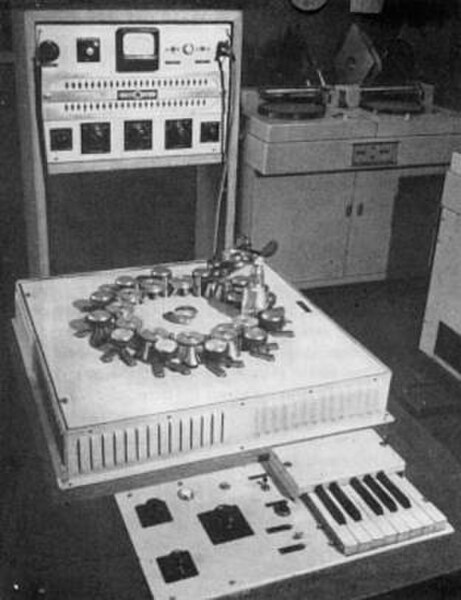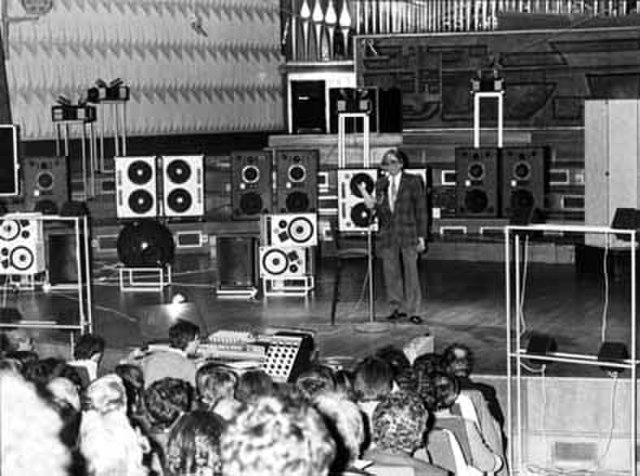Robert Arthur Moog was an American engineer and electronic music pioneer. He was the founder of the synthesizer manufacturer Moog Music and the inventor of the first commercial synthesizer, the Moog synthesizer, which debuted in 1964. In 1970, Moog released a more portable model, the Minimoog, described as the most famous and influential synthesizer in history. Among Moog's honors are a Technical Grammy Award, received in 2002, and an induction into the National Inventors Hall of Fame.
Robert Moog
A Moog synthesizer
A mural depicting Moog in Asheville, North Carolina
The Moogseum
Electronic music broadly is a group of music genres that employ electronic musical instruments, circuitry-based music technology and software, or general-purpose electronics in its creation. It includes both music made using electronic and electromechanical means. Pure electronic instruments depended entirely on circuitry-based sound generation, for instance using devices such as an electronic oscillator, theremin, or synthesizer. Electromechanical instruments can have mechanical parts such as strings, hammers, and electric elements including magnetic pickups, power amplifiers and loudspeakers. Such electromechanical devices include the telharmonium, Hammond organ, electric piano and electric guitar.
Front page of Scientific American in 1907, demonstrating the size, operation, and popularity of the Telharmonium
Leon Theremin demonstrating the theremin in 1927
Phonogene (1953), a tape machine for modifying the sound structure, developed by Pierre Schaeffer et al. at GRMC
Pierre Schaeffer presenting the Acousmonium (1974) that consisted of 80 loudspeakers for tape playback, at GRM








